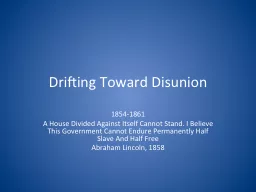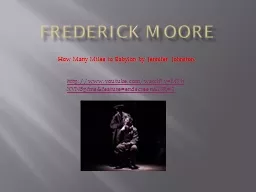PPT-John Brown & Frederick Douglas
Author : pamella-moone | Published Date : 2017-03-22
Abolitionists Friends frenemies John Brown Born in 1800 in rural Connecticut to a strict Calvinist family Farmer laborer ardent abolitionist Member of the Underground
Presentation Embed Code
Download Presentation
Download Presentation The PPT/PDF document "John Brown & Frederick Douglas" is the property of its rightful owner. Permission is granted to download and print the materials on this website for personal, non-commercial use only, and to display it on your personal computer provided you do not modify the materials and that you retain all copyright notices contained in the materials. By downloading content from our website, you accept the terms of this agreement.
John Brown & Frederick Douglas: Transcript
Download Rules Of Document
"John Brown & Frederick Douglas"The content belongs to its owner. You may download and print it for personal use, without modification, and keep all copyright notices. By downloading, you agree to these terms.
Related Documents














